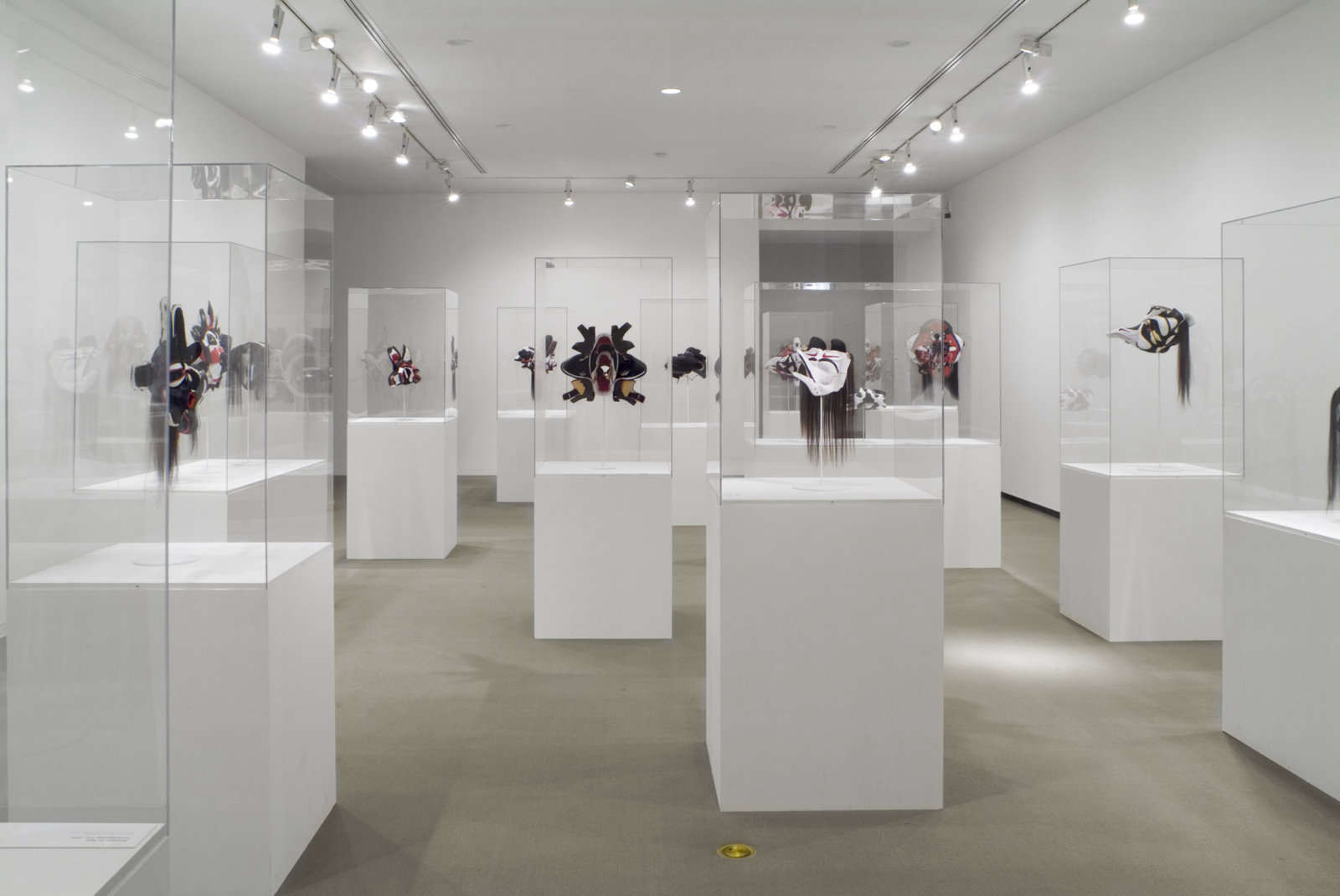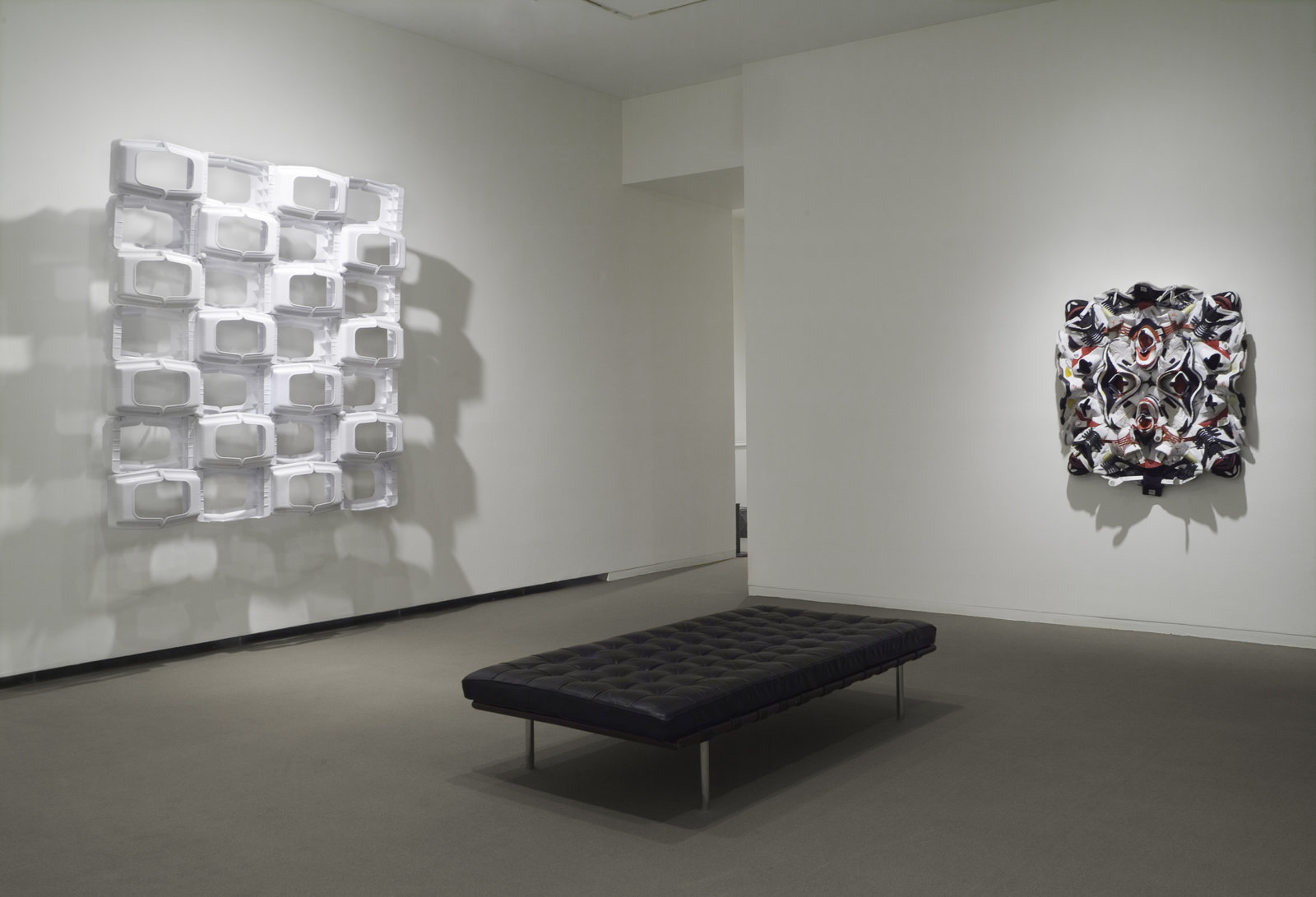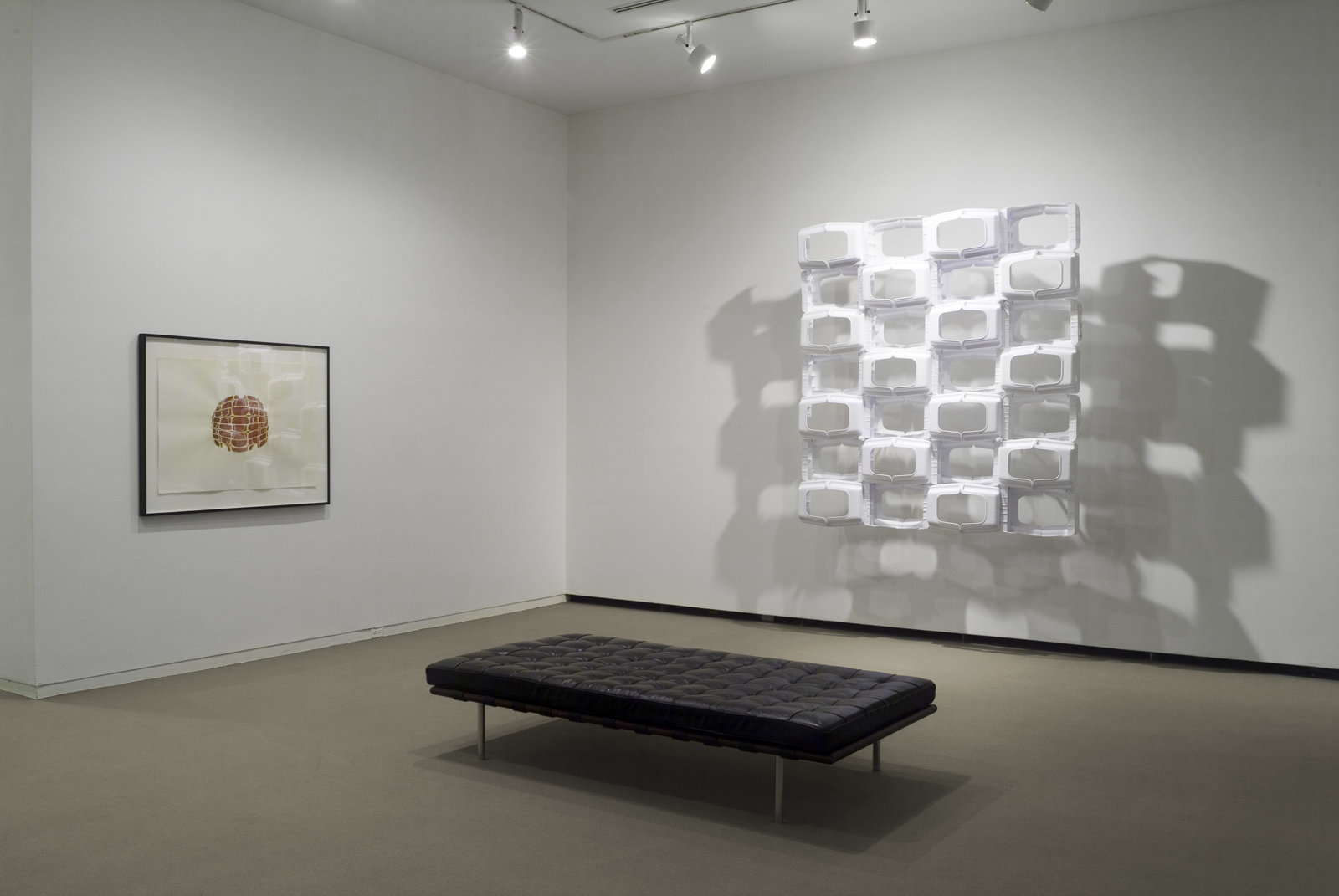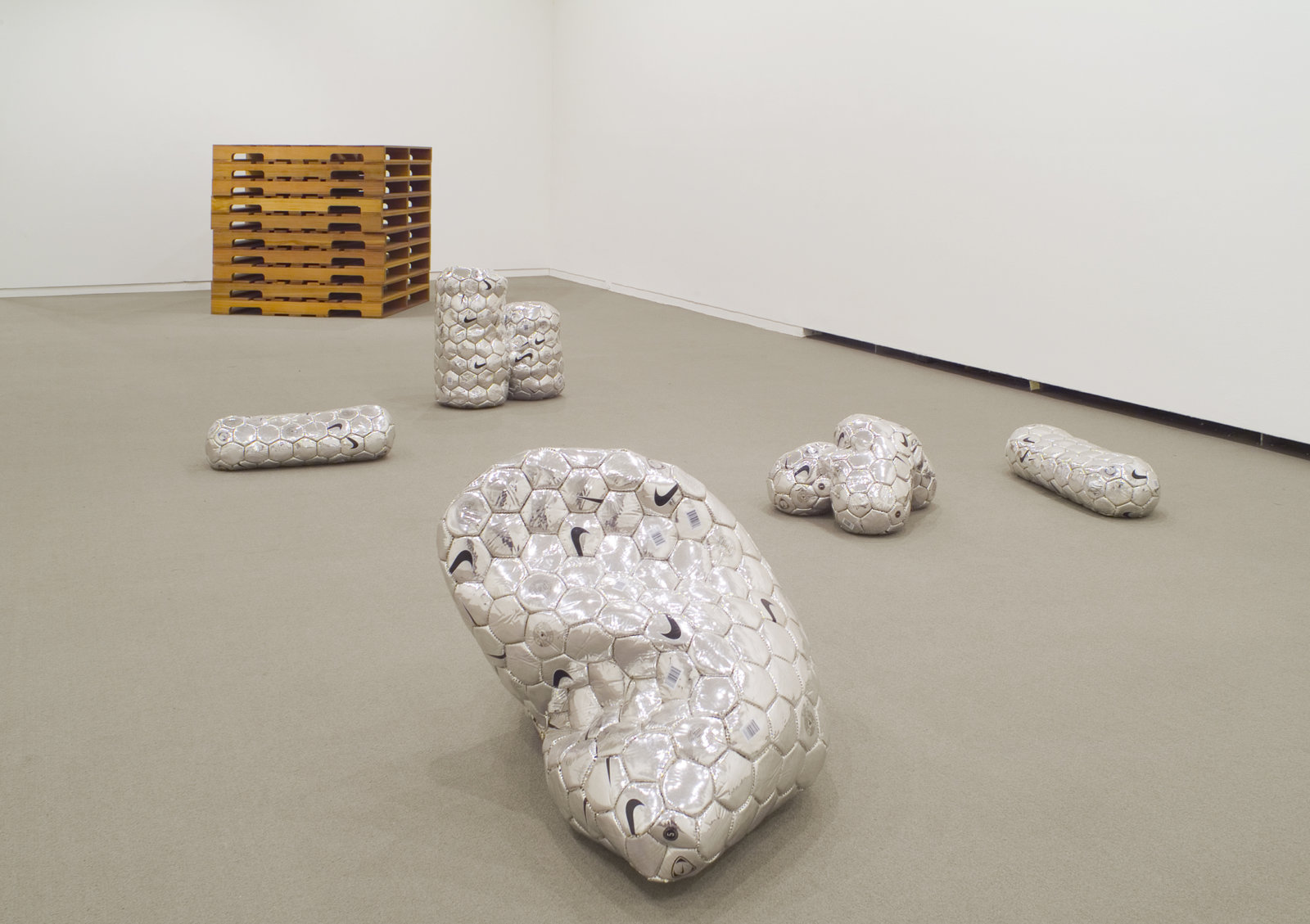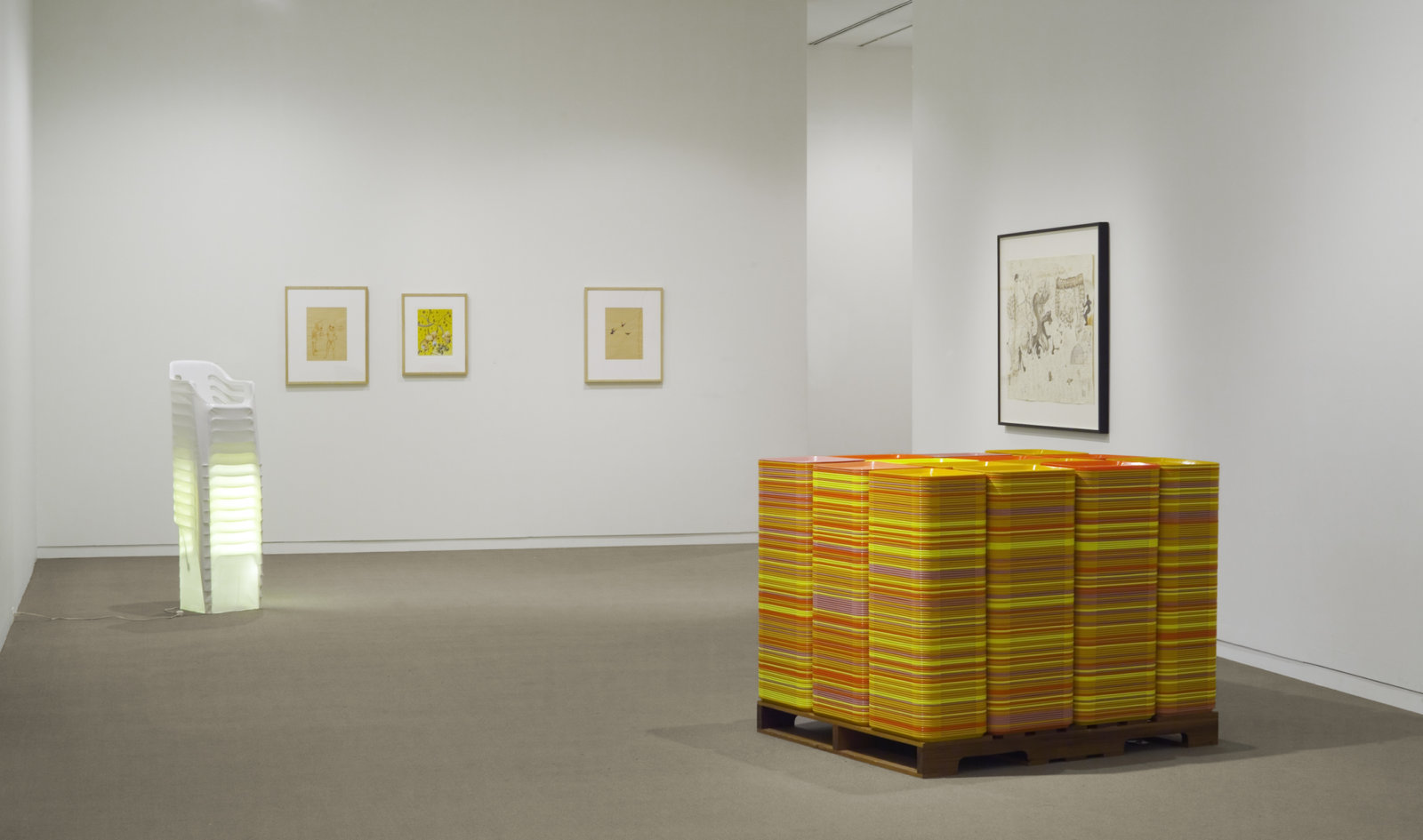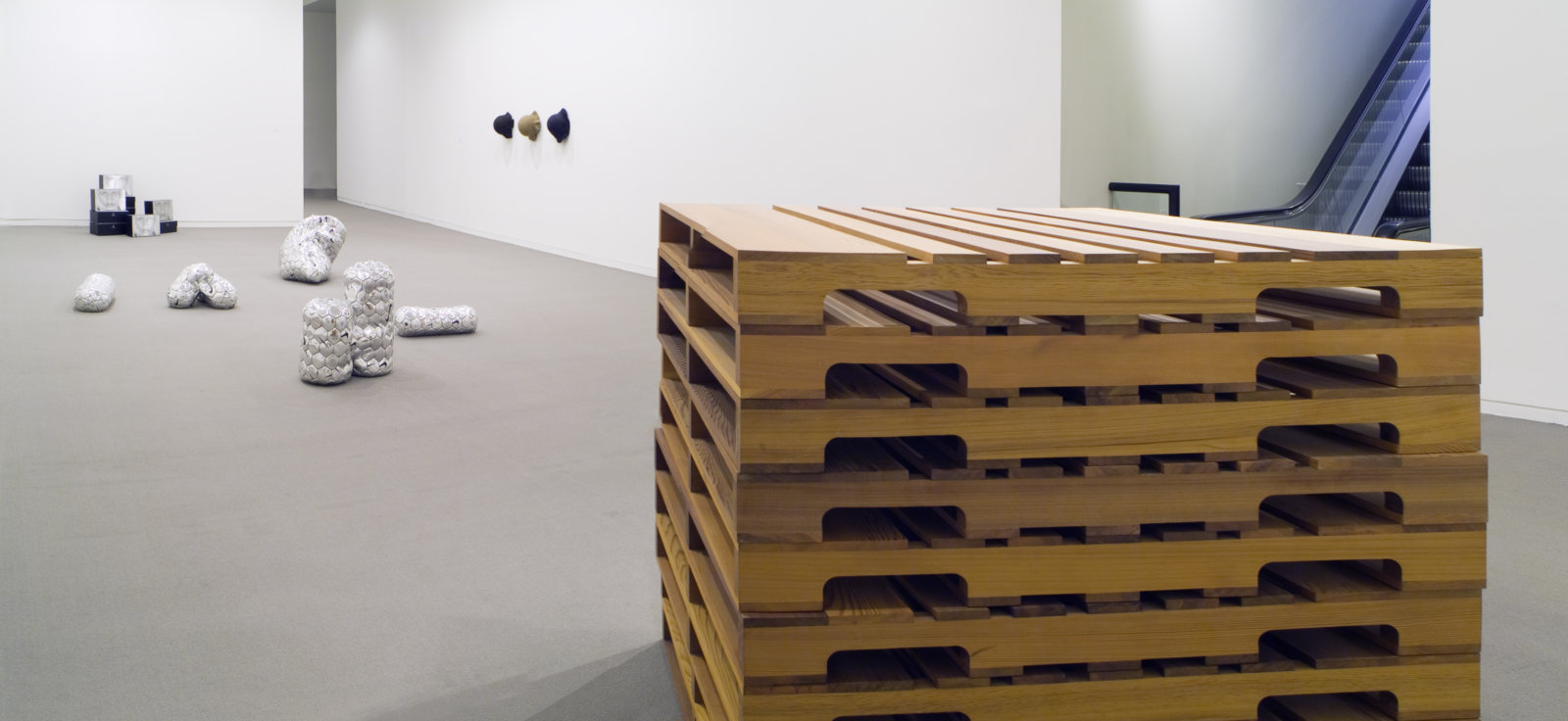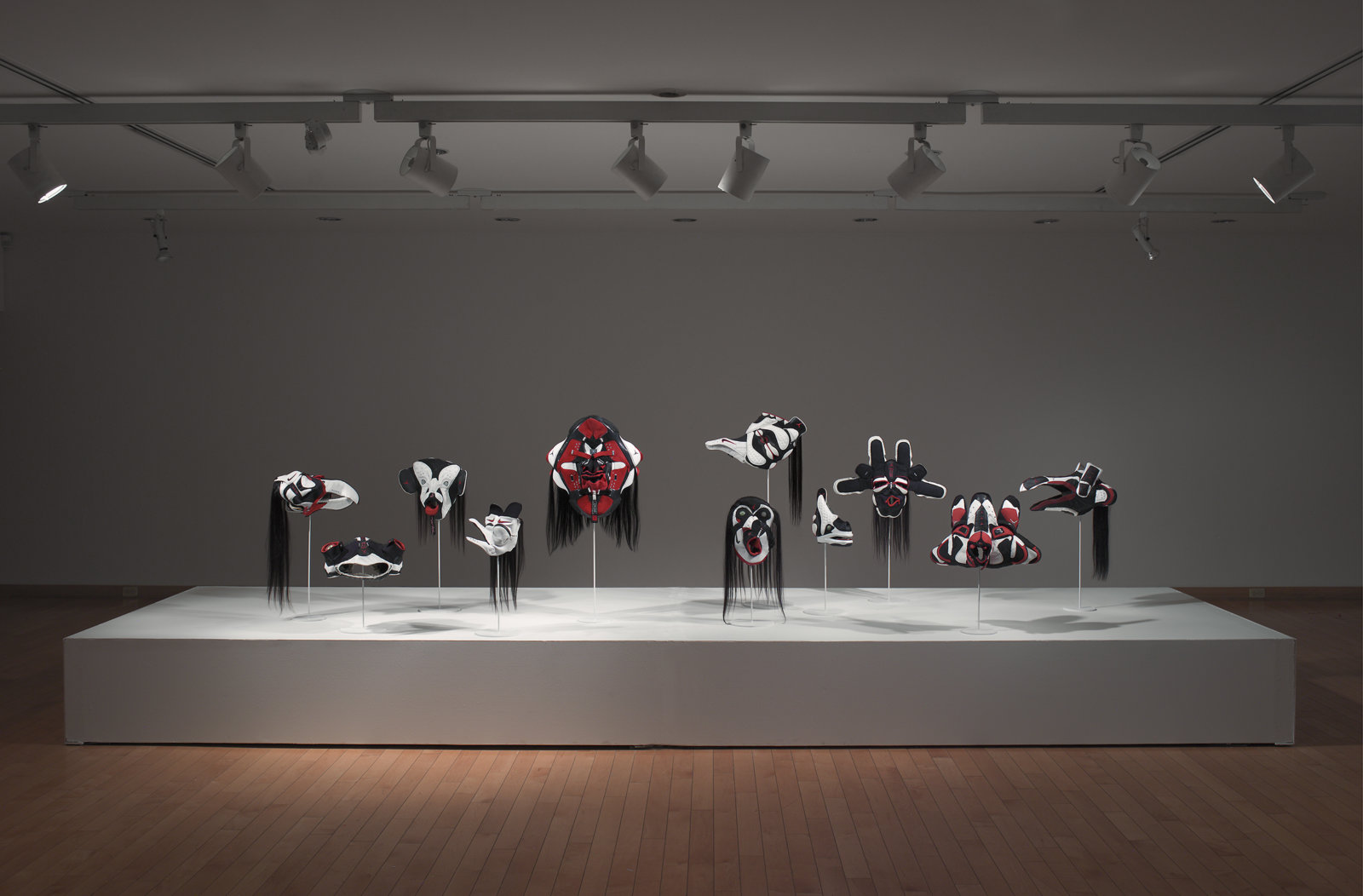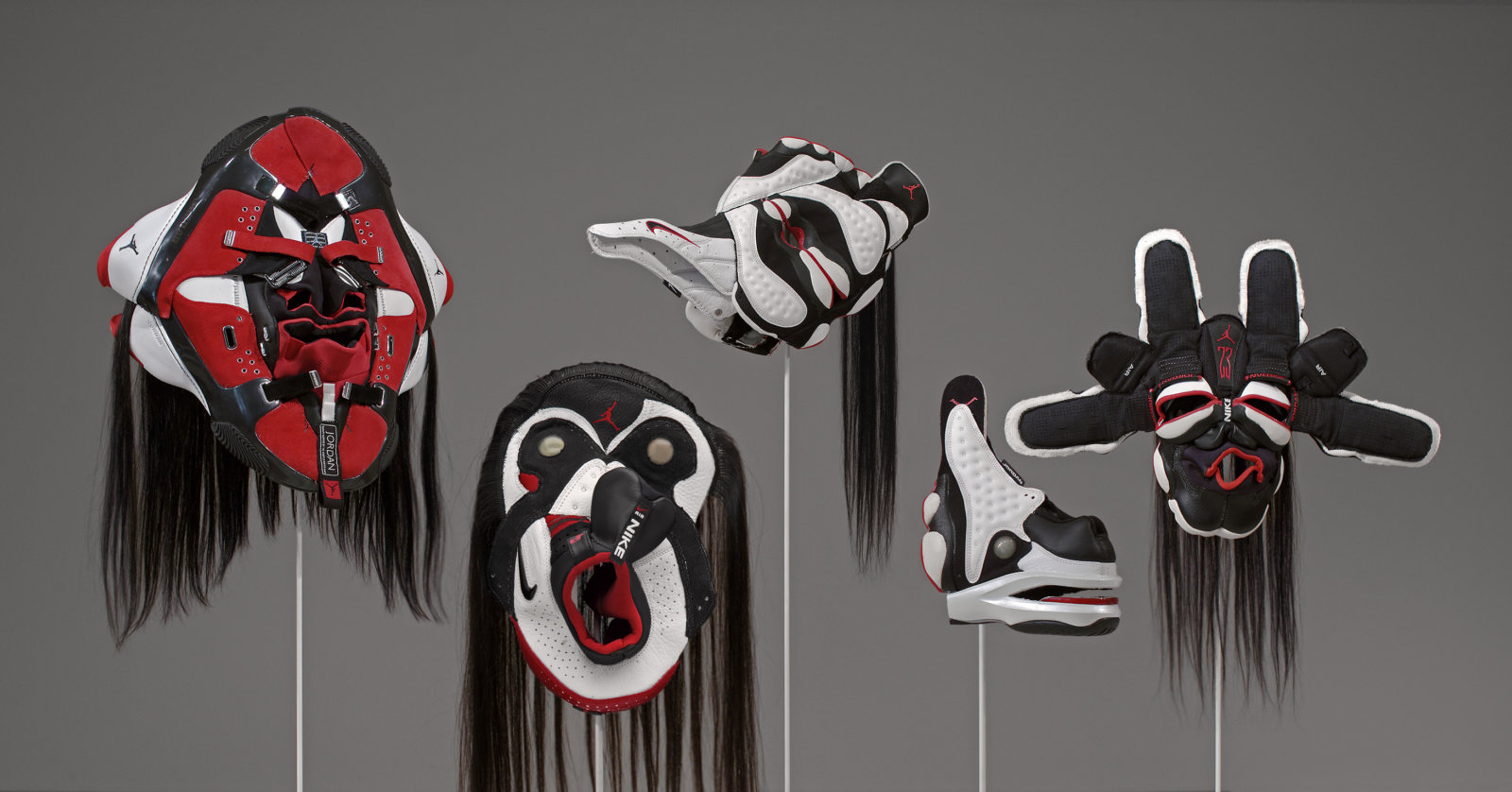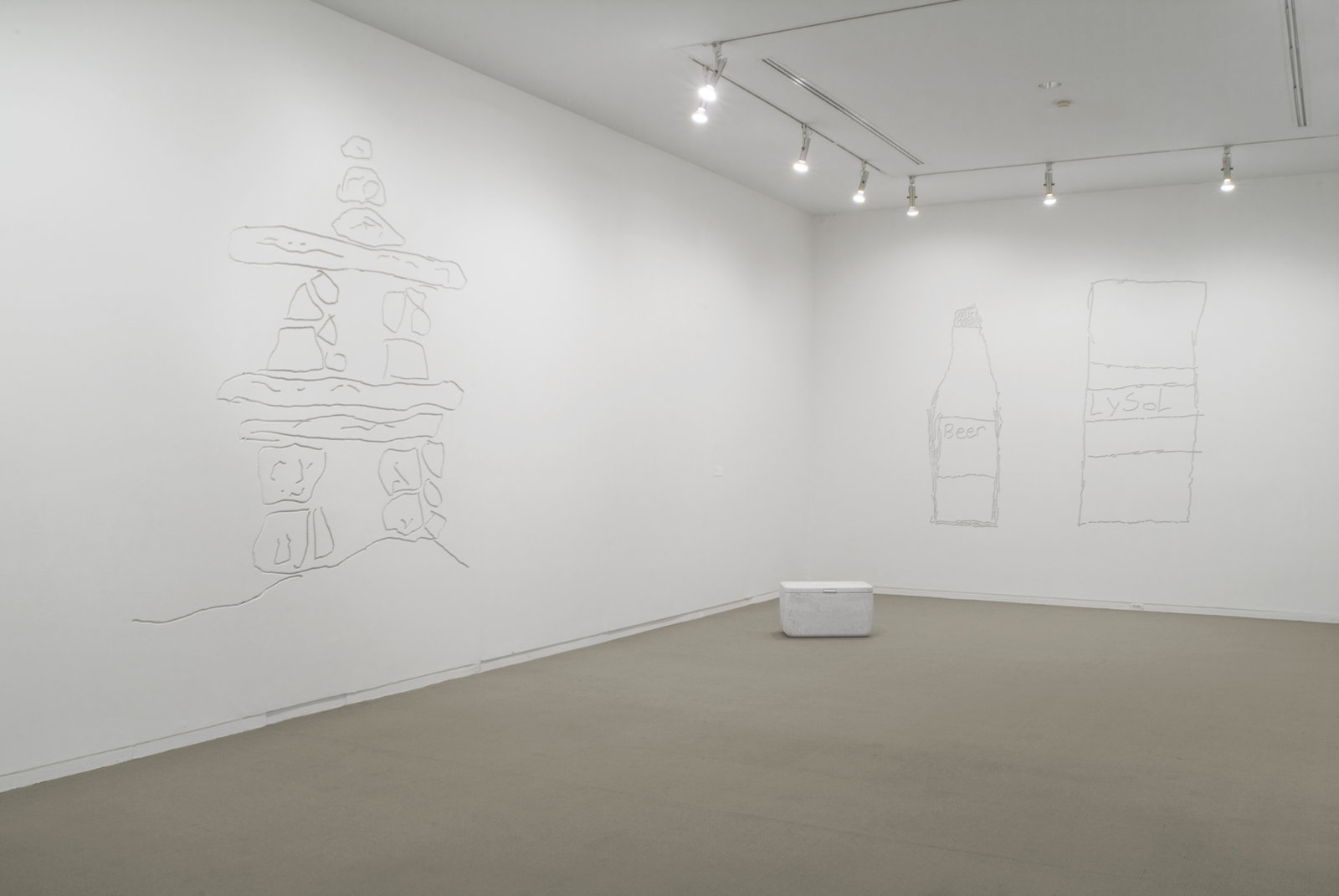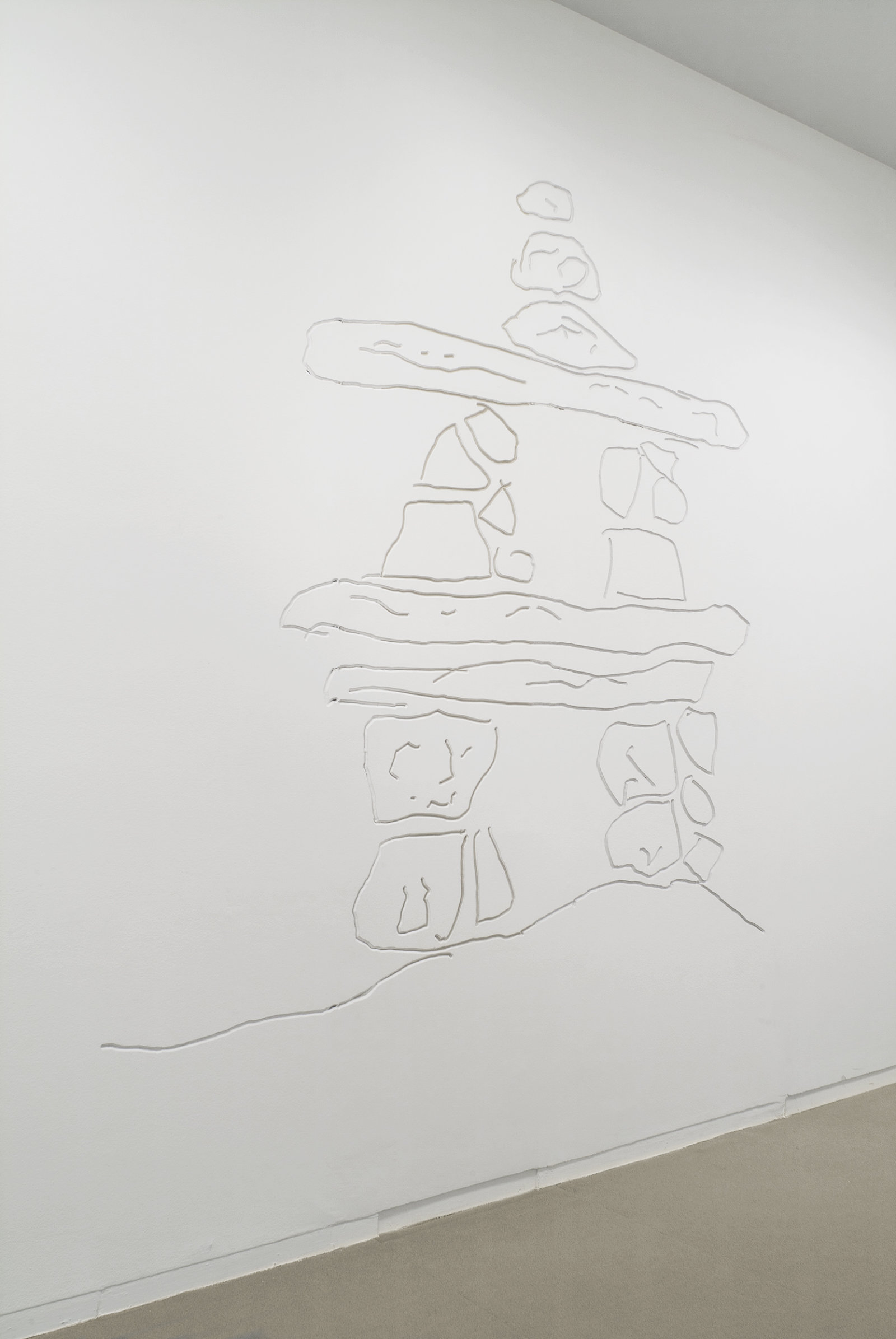Brian Jungen – Vancouver Art Gallery, JANUARY 28–APRIL 30, 2006
Brian Jungen
January 28–April 30, 2006
Vancouver Art Gallery, Vancouver, Canada
The first comprehensive survey of work by artist Brian Jungen opens at the Vancouver Art Gallery January 28 and will remain on display through to April 30, 2006. Currently receiving critical acclaim at the New Museum of Contemporary Art in New York, the Vancouver artist’s exhibition will be significantly expanded for its return home with the addition of artworks currently in production, including several pieces created specifically for the Vancouver presentation. Organized by the Vancouver Art Gallery and comprised of more than 40 works ranging from early drawings and sculptures to large-scale installations, Brian Jungen brings together the artist’s major series and key singular works for the first time.
“The Gallery has long been a showcase for exceptional emerging talent and is committed to supporting Vancouver’s world-class artists,” said Vancouver Art Gallery Director Kathleen Bartels. “The exhibition offers insight into Brian Jungen’s complex and innovative work. We are proud to have organized this touring exhibition and to help share Brian’s artistic vision and significant accomplishments with an international audience.”
Through the transformation of consumer goods and common materials into symbolic sculptures and installations, Jungen examines cultural norms and social issues. The artist is perhaps best known for his Prototype for New Understanding series (1998–2005), 23 startling simulations of Northwest Coast Aboriginal ceremonial masks fabricated from disassembled Nike athletic shoes. With incredible versatility, Jungen uses the black, red and white colour scheme of the footwear, the various materials of their construction, and the logos and insignias in which they are decorated, to create what closely echoes iconic Aboriginal artifacts. Through this ingenious manipulation, the artist collides two seemingly different commodities — globally branded footwear and revered First Nation’s artwork.
Born in the northeastern interior of British Columbia in 1970 to a Swiss father and Aboriginal mother, Jungen moved to Vancouver as a young adult, graduating from the Emily Carr Institute of Art and Design in 1992. He then lived in New York before returning to Vancouver. In 2002, he was awarded the inaugural $50,000 Sobey Art Award, the most lucrative Canadian award for emerging artists, in recognition of outstanding achievement. Today, Jungen is a key figure in Vancouver’s art community and has gained an international reputation as one of Canada’s most promising contemporary artists.
“Brian Jungen’s works question and complicate the meaning of everyday objects,” said Chief Curator/Associate Director Daina Augaitis. “The exhibition examines his practice of transforming materials, instilling disorder into order and dismantling preconceived ideas of contemporary culture.”
Also widely celebrated are Jungen’s three enormous and incredibly lifelike whale skeleton sculptures—Shapeshifter (2000), Cetology (2002) and Vienna (2003). Made from common plastic lawn chairs, his “whales” oscillate between objects of natural history and critiques of commodity culture, simultaneously understood as both natural forms and recognizable household objects. Cetology, the largest of the three measuring 49 feet in length, is included in the Gallery’s permanent collection. Made from readily available source materials, the works are imbued with the quality of everyday life while simultaneously pointing to cultures and institutions of display, such as natural history museums and aquariums, where mammals live in captivity and are ultimately rendered lifeless. At the root of Jungen’s Prototype for New Understanding and whale skeleton sculptural series—both appearing in their entirety for the first time in the Brian Jungen exhibition—is a powerful contrast between subject matter and materials that offers a wry examination of cultural values and norms.
Like many artists of his generation, Brian Jungen’s work is inflected with references to recent art history. An important stream of his sculptural work refers to the minimalist movement of the 1960s and 1970s. However, Jungen’s seemingly minimalist works include powerful allusions to the global economy and social issues, thereby deftly subverting the largely aesthetic tradition that he appears to be working in. A notable example is Isolated Depiction of the Passage of Time, a sculpture made up of hundreds of cafeteria trays of varying colour, which appears to echo the sculptural form of the minimalist “stack.” However, Jungen’s work references a mode of escape created by an inmate at Millhaven Maximum Security Prison, who stacked dining hall trays on a moving pallet and hid inside in order to gain freedom when transported outside of prison walls. Fraught with meaning, the number and colour of trays in the work correspond to the number of Aboriginal males incarcerated in Canada’s penal institutions, highlighting the disproportionate number of Aboriginal men serving time in the country’s corrections facilities.
One of the first public institutions to collect works by Jungen, the Vancouver Art Gallery has drawn from its own collection for the exhibition. In addition to the Gallery’s collection, Brian Jungen brings together works from the collections of the Art Gallery of Ontario, the National Gallery of Canada and other Canadian museums, as well as numerous private collections. A 162-page full colour catalogue accompanies the exhibition featuring essays by the exhibition’s curator Daina Augaitis; Trevor Smith, curator at the New Museum of Contemporary Art; Cuauhtemoc Medina, a Mexican curator and critic; Ralph Rugoff, director of the Wattis Institute of Contemporary Arts, San Francisco; and Kitty Scott, curator of Contemporary Art at the National Gallery of Canada. The catalogue also features a conversation between Jungen and British artist Simon Starling, a recent nominee for the 2005 Turner Prize.
